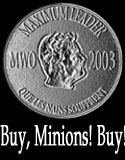My classes are in the last stretch before the AP exam. I reviewed the court cases the class covered this morning. I gave them a handout with enough description to trigger their memories. I figured some of our political monkey readers might be interested. The cases we covered are below. If you think there is a court case(s) that I ought to include in a U.S. history course, let me know in the comments.
AP US Court Cases Review
Colonial Period
Zenger case: Truth is a defense against libel. Precedent that criticism of government officials is permissible.
Marshall Court (Increasing Federal Power)
1801 Marbury v. Madison: Judicial Review (SC, NOT states, decides constitutionality. Third branch co-equal)
1810 Fletcher v. Peck: First time a law was struck down using judicial review. States cannot abrogate contracts (rule of law and protection of private property = climate for entrepreneurship) States cannot pass laws ûôÂûÂãô˜û ãimpairingûôÂûÂãô˜ûô contracts.
1819 Dartmouth v. Woodward: Stopped New Jersey from seizing Datmouth and making it a public college; strengthens contract power.
1819 McCulloch v. Maryland: Congress has the implied power to establish a bank (ûôÂûÂãô˜û ãnecessary and properûôÂûÂãô˜ûô elastic clause) and states may not tax federal institutions (ûôÂûÂãô˜û ãpower to tax is power to destroyûôÂûÂãô˜ûô)
1821 Gibbons v. Ogden: New YorkûôÂûÂãô˜ûÂãôÂs grant of a steamboat monopoly found to be unconstitutional; only the feds can regulate interstate trade. Expanded fed interstate power.
1831 Cherokee Nation v. Georgia: Court ruled that Cherokees were not a nation with direct access to the federal courts when they sued to block Indian Removal.
1832 Worcester v. Georgia: Said that Cherokees WERE a nation and state laws did not apply them. Marshall messing with Jackson. Jackson ignores supreme court, says ûôÂûÂãô˜û ãMarshall has made his decision, let him enforce it.ûôÂûÂãô˜ûô
1856 Dred Scott v. Sanford: Slavery was protected by the federal Constitution and no state government could interfere with slavery (i.e. slavery legal everywhere).
1865 Ex Parte Milligan: People held under the suspension of habeus corpus may not be tried/executed. LincolnûôÂûÂãô˜ûÂãôÂs tactics challenged.
Gilded Age
1877 Munn v. Illinois: Upheld state regulation of railroads as a matter of public interest. Increased power of states to interfere with private contract and to regulate. Interstate questions unanswered.
1886 Wabash: Struck down Illinois regulation of railroads for violating interstate commerce power of fed government. Re-established feds AND business power over populist legislatures in the west.
1896 Plessy v. Ferguson: Gave federal sanction to the Jim Crow South. The ruling held that ûôÂûÂãô˜û ãseparate but equalûôÂûÂãô˜ûô segregated facilities did not violate the 14th Amendment. Overturned by Brown in 1954.
1895 In Re Debs: Upheld DebsûôÂûÂãô˜ûÂãôÂ contempt of court conviction for failing to halt a railroad strike. Use of federal power to suppress labor.
1919 Schenck v. United States: Speech may be limited to avoid ûôÂûÂãô˜û ãclear and present danger.ûôÂûÂãô˜ûô Espionage act upheld (also established the ûôÂûÂãô˜û ãfire!ûôÂûÂãô˜ûô in a crowded theatre analogy.
1919 Debs v. United States: Speech may be limited to avoid ûôÂûÂãô˜û ãclear and present dangerûôÂûÂãô˜ûô ûôÂûÂãô˜ûÂã˜é in this case, the danger was Debs was discouraging people from accepting the draft. Applied to political speech.
New Deal
Schecter Poultry v. United States: Invalidated one of FDRûôÂûÂãô˜ûÂãôÂs alphabet agencies, the NIRA, saying that since SchecterûôÂûÂãô˜ûÂãôÂs products were consumed within state boundaries, it was engaged in INTRAstate commerce and not subject to federal regulation requiring it provide certain wages and hours to its employees. Led to the court-packing scheme. This was a limit to federal power.
1944 Korematsu: The Supreme Court upheld the internment of Japanese-Americans, saying that they did present a danger to the United States. America often restricts rights during wartime and then expands rights in the aftermath of the war.
1951 Dennis v. United States and 1957 Yates v. United States: Free speech, even political speech, is not absolute. You may not advocate the overthrow of the government; doing so is a clear and present danger.
Earl Warren Court (Expand due process rights to protect accused in state courts; advanced civil rights)
1954 Brown v. Board of Education of Topeka Kansas: Argued by Thurgood Marshall of the NAACP, the decisions overturned Plessy and said that ûôÂûÂãô˜û ãseparate is inherently unequal.ûôÂûÂãô˜ûô Local schools were required to desegregate with ûôÂûÂãô˜û ãall deliberate speed.ûôÂûÂãô˜ûô Revived the issue of statesûôÂûÂãô˜ûÂãôÂ rights as southern states engaged in massive resistance. Also sparked ûôÂûÂãô˜û ãwhite flightûôÂûÂãô˜ûô from the cities to the suburbs.
1961 Mapp v. Ohio: Illegally seized evidence may not be used. Exclusionary rule/poisoned fruit doctrine.
1962 Baker v. Carr: Feds can force states to redraw districts; Tenessee had not redrawn districts since the turn of the century in order to disenfranchise urban (read: black) voters. 14th AmendmentûôÂûÂãô˜ûÂãôÂs protection of due process used to limit state power over elections. Allows feds to oversee state district drawing. Part of the Civil Rights movement.
1962 Engle v. Vitale: Teacher led prayer in schools violates the establishment clause of the First Amendment. Student-led prayer still acceptable.
1963 Gideon v. Wainwright: The state MUST give indigent defendants a court-appointed lawyer.
1965 Griswold v. Connecticut: Recognizes a right to privacy. Threw out birth control restrictions because couples had a right to privacy in sexual relations (leads to Roe).
1966 Miranda v. Arizona: Police may not question a suspect without reading the suspect his rights. Miranda warning.
1969 Tinker v. Des Moines: Protection of ûôÂûÂãô˜û ãsymbolic speechûôÂûÂãô˜ûô (black armbands to protest the Vietnam War). Accepts that students do not surrender all rights when they enter the classroom; administration have a reasonable apprehension of school disruption to limit speech. Symbolic speech eventually expanded to flag burning (1949 Texas v. Johnson).
1971 New York Times v. United States: Allowed the New York Times and Washington Post to publish the Pentagon papers. Government may not (really) use prior restraint censorship.
1972 United States v. Nixon: Nixon had to turn over the Watergate tapes. Executive power has limits and Congress does have oversight power. Executive power does not allow the President to shield evidence of criminal wrongdoing.
1973 Roe v. Wade: The right to privacy created a ûôÂûÂãô˜û ãpenumbraûôÂûÂãô˜ûô of a right to control oneûôÂûÂãô˜ûÂãôÂs reproduction. States may not prohibit abortion until after viability is achieved. Considered by many to be another Dred Scott in that it denied the humanity of a class of persons (slaves and unborn children).
1976 Bakke: Quota-based affirmative action (in this case for medical school applications in California) is unconstitutional. Holistic considerations are still permissible.
2003 Lawrence v. Texas: Struck down anti-homosexuality laws under the penumbra of privacy. Extended the penumbra to non-married couples. Fuel on the fire of the culture wars.
2005 Gonzales v. Raich: Massive increase of interstate regulation: EVERYTHING is interstate commerce, even one pot plant grown in a womanûôÂûÂãô˜ûÂãôÂs backyard for her own medically prescribed doobie consumption.
2005 Kelo v. New London: Allowed the use of eminent domain to transfer property between private parties. Massive increase of government power.


